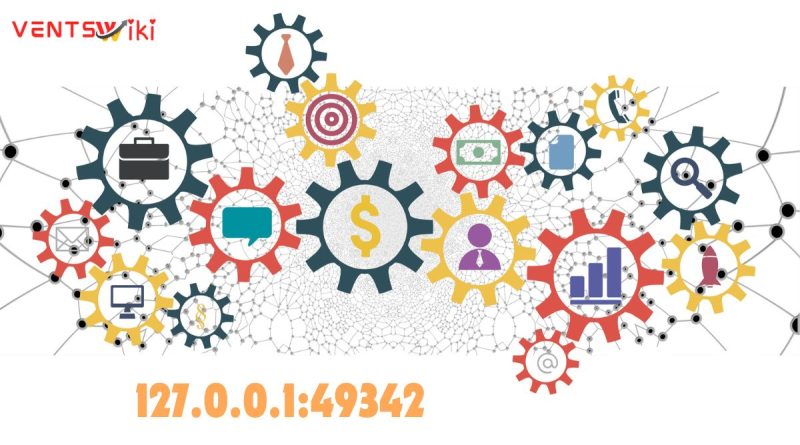Exploring 127.0.0.1:49342: What You Need to Know
When we delve into the realm of networking and computer systems, the concept of “127.0.0.1:49342” might seem cryptic at first. However, understanding this term is crucial for developers, system administrators, and tech enthusiasts who work with networks, web servers, or software development. To truly grasp the significance of “127.0.0.1:49342,” we must break it down into its constituent parts — the IP address “127.0.0.1” and the port “49342.”
Understanding 127.0.0.1: The Localhost IP Address
The IP address “127.0.0.1” is commonly referred to as “localhost.” In networking, “localhost” is a hostname that means “this computer,” used to access the network services running on the local machine. Whenever an application sends a request to “127.0.0.1,” it is essentially communicating with itself. The IP address “127.0.0.1” is part of a reserved range known as loopback addresses, which are designated for internal testing and communication within a single computer.
Why is “127.0.0.1” Important?
The address “127.0.0.1” is crucial for developers and system administrators as it is used extensively in testing and development environments. For example, when setting up a web server, a developer can use “127.0.0.1” to test how the server responds to requests without needing an internet connection. This ability to simulate real-world scenarios locally without external dependencies makes “127.0.0.1” a valuable tool in software development and troubleshooting.
The Role of Port 49342 in Networking
To fully understand “127.0.0.1:49342,” we need to explore the concept of ports in networking. A port is a communication endpoint that allows multiple services to run on a single IP address without conflict. Every service on a network or a server is assigned a unique port number to distinguish it from other services.
What is Port 49342?
Port “49342” is an arbitrary number that falls within the dynamic or private port range, which spans from 49152 to 65535. These ports are not assigned to any specific service by the Internet Assigned Numbers Authority (IANA) and are often used by applications for temporary communication needs. For instance, when a web browser connects to a server, it uses a randomly chosen dynamic port to establish the connection.
When we look at “127.0.0.1:49342,” we are essentially specifying a local network address combined with a port number. This combination indicates that the service or application on port 49342 is running on the local machine.
Use Cases of 127.0.0.1:49342
Now that we understand the components of “127.0.0.1:49342,” let’s explore some common use cases where this address and port combination comes into play:
- Web Development and Testing:
- During web development, developers often need to run web servers locally to test their applications. By using “127.0.0.1:49342,” they can host a web server on their machine and test how the application behaves. Since “127.0.0.1” points to the local machine, developers don’t need an internet connection to perform these tests.
- Database Management:
- Many database management systems, such as MySQL or PostgreSQL, run locally during development. Developers use addresses like “127.0.0.1:49342” to connect to these local databases for testing purposes. The specific port “49342” might be configured by the developer or database management system to handle database requests on the local server.
- Application Debugging:
- Debugging applications often requires monitoring network traffic to identify issues. Tools such as Wireshark or Fiddler can capture traffic sent to “127.0.0.1:49342,” helping developers analyze and debug the data being exchanged between applications or services.
- Running Local Services:
- Some services are designed to run only on local machines for security reasons. For example, a password manager might run a small web server at “127.0.0.1:49342” to provide a secure interface for managing passwords. Since the server is bound to “127.0.0.1,” it cannot be accessed externally, thus providing an added layer of security.
- Proxy Servers and Tunneling:
- Proxy servers can be set up on “127.0.0.1:49342” to route traffic through another server for anonymity or bypassing network restrictions. Similarly, tools like SSH (Secure Shell) can use “127.0.0.1:49342” to create a secure tunnel, allowing encrypted communication between a local machine and a remote server.
Security Implications of Using 127.0.0.1:49342
While “127.0.0.1:49342” is commonly used for development and testing, it’s essential to be aware of the potential security risks associated with using localhost and specific ports. Since “127.0.0.1” only accepts connections from the local machine, it is generally safe from external attacks. However, if sensitive data or applications are accessible on “127.0.0.1:49342,” a compromised local machine could still lead to data breaches or unauthorized access.
Mitigating Security Risks:
- Access Controls:
- Always ensure that sensitive services running on “127.0.0.1:49342” have proper authentication mechanisms in place. Even though “127.0.0.1” limits access to local connections, enforcing strong passwords and multi-factor authentication adds an extra layer of security.
- Regular Monitoring:
- Regularly monitor the ports and services running on your machine. Using tools like Netstat or lsof, you can track active connections and detect any unusual activity on “127.0.0.1:49342.”
- Firewall Rules:
- Implement firewall rules to prevent unauthorized applications from accessing “127.0.0.1:49342.” A properly configured firewall can block any unwanted traffic and restrict access to specific ports.
- Update and Patch Regularly:
- Ensure that all software and services running on your machine, including those listening on “127.0.0.1:49342,” are updated regularly. Patching known vulnerabilities can protect against potential exploits targeting your local environment.
Troubleshooting Common Issues with 127.0.0.1:49342
When working with “127.0.0.1:49342,” several issues might arise due to network configuration, firewall settings, or application errors. Here are some common troubleshooting steps:
- Check Port Availability:
- Ensure that port “49342” is not being used by another service. You can use tools like
netstatorlsofto list all open ports and identify if any conflicts exist.
- Ensure that port “49342” is not being used by another service. You can use tools like
- Verify Application Configuration:
- Double-check the configuration files of the applications or services running on “127.0.0.1:49342.” Incorrect settings can prevent applications from properly binding to the port or IP address.
- Inspect Firewall and Security Software:
- Make sure that your firewall or security software is not blocking connections to “127.0.0.1:49342.” Configuring exceptions for trusted applications may resolve connectivity issues.
- Test Connectivity with Telnet or Ping:
- Use commands like
telnet 127.0.0.1 49342to test if the port is open and listening for connections. If the connection fails, it might indicate that the service is not running or is blocked.
- Use commands like
Conclusion
In the world of networking and development, understanding “127.0.0.1:49342” is vital. This combination represents a local loopback address and a dynamic port, used primarily for testing, development, and local communication. Whether you are hosting a web server, running a local service, or debugging an application, “127.0.0.1:49342” provides a secure and efficient way to interact with your computer’s network capabilities.




